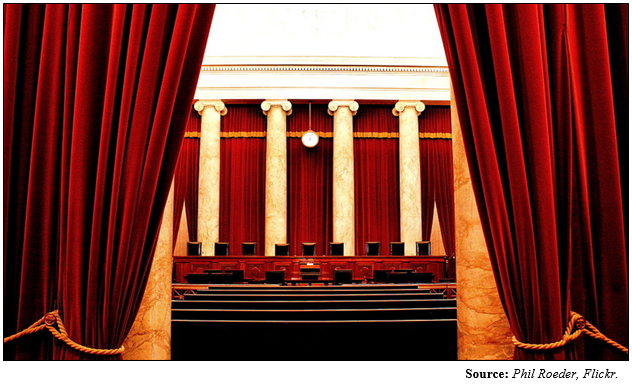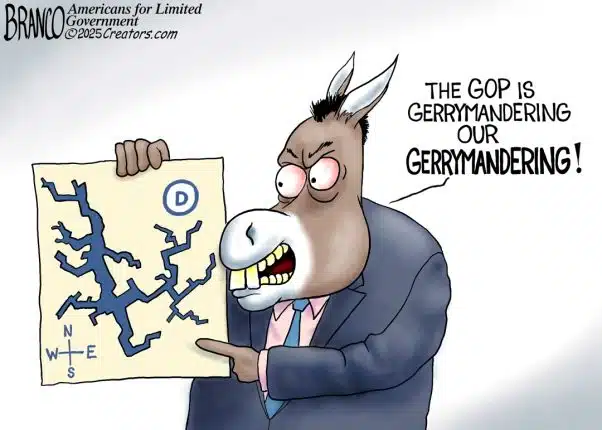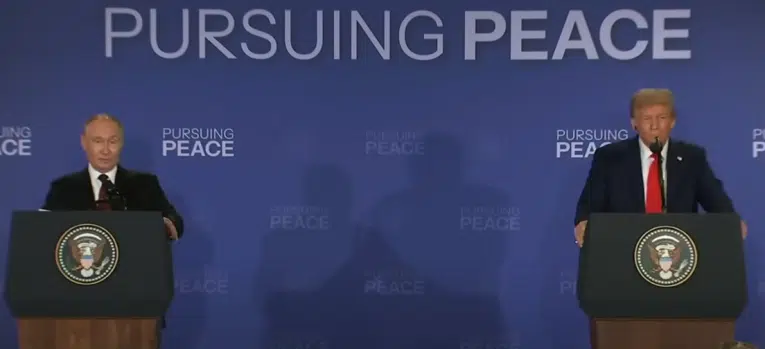By Natalia Castro
The Supreme Court is already looking at a full docket and with a replacement for the retired Justice Anthony Kennedy, Judge Brett Kavanaugh, still working his way through the Senate, we can expect some split decisions for the October term. Since only eight justices will be on the bench, there is a chance of several 4-4 decisions, in these cases lower court rulings stand and a strong precedent is usually not made. Last term, several controversial cases landed on 5-4 decisions, meaning the Court could be split once again on controversial issues. Here are some of the cases coming forward:
Weyerhaeuser Company v. United States Fish and Wildlife Service (FWS)
The Endangered Species Act (ESA) has long been challenged by conservatives as an element of government overreach. In an effort to protect threatened animal species, the ESA gave the federal government influence over state and local lands deemed “critical” to a species survival.
In Louisiana, the U.S. Fish and Wildlife Service (FWS) designated land being used by the Weyerhaeuser Timber Company as critical habitat for the dusky gopher frog and subjected the group to significant regulations. The problem? No dusky gopher frogs actually live in this area. Instead, the FWS has plans to restore the area so the remaining 150 dusky gopher frogs can move to the area for recovery.
The Weyerhaeuser Company argues that the FWS cannot use the ESA to regulate lands that are not critical to an animal’s survival, and cannot preemptively decide a land will be necessary for their survival one day.
The case was sent from the 5th Circuit Court of Appeals and arguments began on Oct. 1. Analysis for SCOTUSBlog from Lisa Heinzerling found, Supreme Court liberal justices seemed to lean toward the FWS while more conservative justices saw the land regulation unnecessary. In the result of a 4-4 split, the FWS designation of land as a protected zone would remain.
Mount Lemmon Fire District v. Guido
Arguments also began this week in Mount Lemmon Fire District v. Guido, a case arguing that small government agencies should be exempt from the same Age Discrimination clauses as public corporations with 20 or less employees. The 9th Circuit Court, which is popular for writing its own laws and expanding government overreach from the Bench, affirmed that small government agencies should be subject to the law.
John Guido and Dennis Rankin argue that they were laid off from their fire department jobs due to their age. The Department argues it was not their age, but their failure to participate in an assignment. The Department further argues that they are exempt from age discrimination suits just as public groups are.
Jeff Matura, one of Mount Lemmon Fire District attorneys, explained that a 4-4 decision would financially cripple cash strapped small agencies, “If the court reads it (the statute) the way the government reads it, then that will open up liability to thousands and thousands and thousands and thousands of public entities around the country that have 19 or fewer employees.”
Nielsen v. Preap
Nielsen v. Preap has sparked controversy in the era of “abolish ICE” narratives coming from the left. The case is based off two cases in which legal permanent residents were arrests for deportable offenses, both served criminal sentences and were released years before removal proceedings began. The government engaged in removal proceedings based on the crimes committed and years later, the individuals were placed in detention facilities.
The 9th Circuit ruled in favor of Preap and argued that unless the removal proceedings occur immediately as the individual moves from correction custody to Homeland Security custody, a hearing must be granted in which the individual can argue before an immigration judge to prove they are not a danger to society or a flight risk while awaiting removal proceedings. Without this, an individual can be upended from their life at any time.
The state argues this interpretation would create vague inconsistencies within the law, begging questions like how long is too long to qualify as immediately? The state also argues this will significantly hamper detention processes with no legal basis.
Considering the Trump administration’s strong focus on deporting illegal immigrants who pose a threat to national safety or have committed criminal acts, this case could become quite partisan and a 4-4 decision would uphold the 9th Circuit’s decision, a Court which has faced significant scrutiny from the President already.
Oral arguments for the case begin on Oct. 10.
These are just three of the dozens of cases the Supreme Court will be hearing this term. In October alone, the Supreme Court will hear 16 arguments. This is why it is critical to get another conservative Justice on the Supreme Court. Issues of government overreach cannot survive based on 4-4 decisions, the Senate must work quickly to restore the balance.
Natalia Castro is the multimedia manager at Americans for Limited Government.







